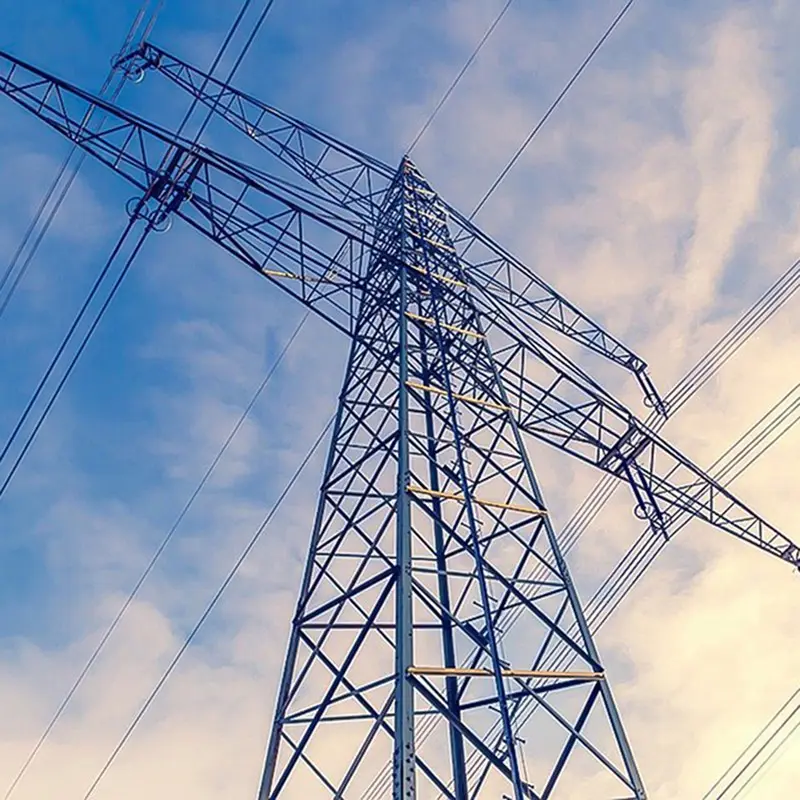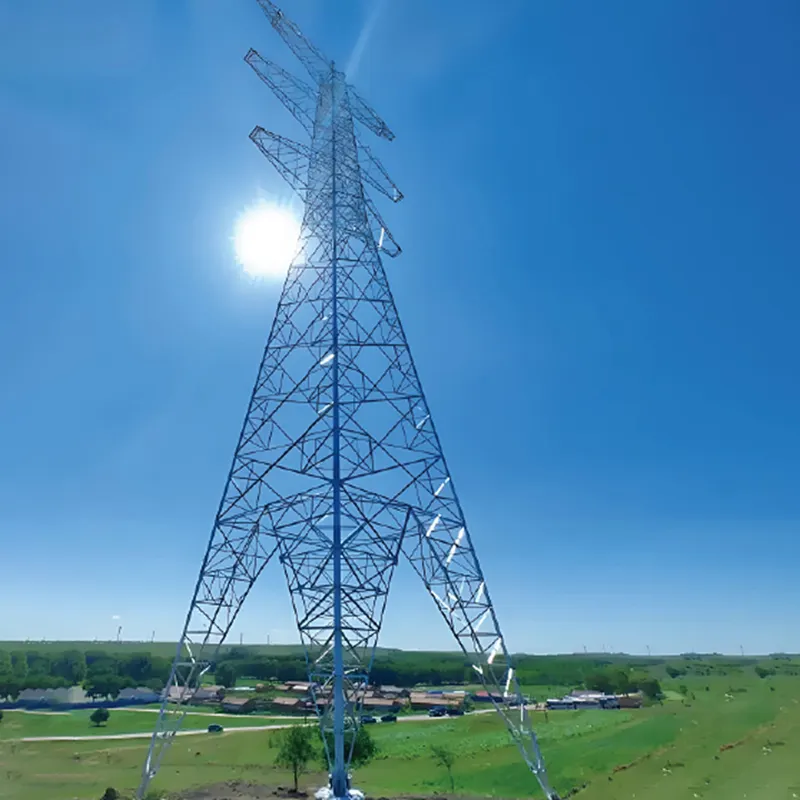The Importance of Power Towers in Modern Infrastructure
Power Towers form the backbone of energy networks, ensuring that electricity generated at power plants reaches cities, industrial facilities, and residential communities. Without these towering structures, modern societies would face frequent blackouts and inefficiencies in energy distribution. Their towering presence symbolizes stability, yet it also exposes them to the most severe natural forces.
In regions affected by storms, hurricanes, floods, or snowstorms, Power Towers are placed under constant pressure. Their structural integrity directly impacts the safety of the communities they serve. For example, if a Power Tower collapses due to high winds or soil erosion, thousands of households may suddenly lose power, hospitals may struggle to keep life-saving equipment running, and businesses may face financial losses. For these reasons, maintaining Power Towers in extreme conditions is not just about engineering—it is about safeguarding entire societies.
Moreover, as renewable energy projects expand globally, Power Towers are playing an even greater role. They are used to carry electricity from remote solar or wind farms into urban centers. This means they must not only endure traditional challenges like wind and ice but also adapt to new demands of higher voltage lines and longer transmission distances. Ensuring their long-term resilience is therefore critical to energy security and environmental progress.
Structural Protection of Power Towers
Reinforcing Tower Foundations
A secure foundation is the first line of defense against weather extremes. In flood-prone areas, Power Towers may face water infiltration that weakens soil strength. Engineers address this by using deep concrete pilings, advanced drainage systems, or compacted soil reinforcements that prevent erosion. Towers with stronger foundations are better able to withstand shifting landscapes, particularly during earthquakes or after prolonged rainfall.
In desert areas, where sand erosion threatens stability, engineers install protective barriers or vegetation layers around the base. These measures slow down the natural degradation of the soil while keeping the Power Towers upright. Such investments in foundation reinforcement ensure that towers remain reliable for decades.
Use of Weather-Resistant Materials
Material choice is equally important in tower maintenance. Traditional steel towers, while strong, are vulnerable to corrosion in humid or coastal environments. By applying protective galvanization, towers gain a zinc coating that prevents rust. In regions with heavy snowfall, anti-icing coatings are applied to prevent ice buildup.
Additionally, composite materials like fiberglass and advanced alloys are increasingly being explored. These offer reduced weight while maintaining strength, making them resistant to both corrosion and extreme temperature fluctuations. Towers made with such materials require less frequent maintenance and are better suited for unpredictable climates.

Maintenance Strategies for Extreme Conditions
Routine Inspection and Monitoring
Inspections are crucial in identifying early warning signs. Teams use drones equipped with high-resolution cameras to scan Power Towers for cracks, loose bolts, or bent beams. Ground-based thermal imaging sensors can detect overheating points in the tower’s structure or electrical systems. By catching these issues early, engineers can prevent sudden failures.
Some companies now implement predictive scheduling, where inspection frequency increases during storm seasons or after earthquakes. This flexible approach ensures that Power Towers are always being monitored based on their specific risk exposure rather than following rigid timelines.
Emergency Response Planning
Preparation for emergencies determines how quickly service can be restored after a weather event. Response plans include staging repair crews near vulnerable regions, stockpiling spare parts, and having helicopters ready to deliver supplies to remote locations. In many countries, mobile substations are also deployed as backups, ensuring that power continues flowing even if towers are temporarily damaged.
These strategies emphasize speed and adaptability. When extreme events strike, the faster Power Towers are repaired, the less disruption communities face. Planning ahead allows teams to respond effectively rather than scrambling under pressure.
Performance of Power Towers in Harsh Environments
Resistance to Strong Winds
Wind is one of the greatest threats to tall structures. Power Towers are designed with aerodynamic shapes that reduce wind resistance. Engineers may use cross-bracing and triangular frameworks that distribute wind force evenly across the structure. In hurricane-prone areas, extra guy wires or anchors are installed to add stability.
Real-world examples show that towers built with wind-resistant designs survive storms that destroy weaker infrastructure nearby. This demonstrates the importance of engineering foresight in tower construction and maintenance.
Adaptation to Cold and Icy Conditions
In regions with heavy snow or freezing rain, Power Towers face the challenge of ice loading. Ice adds significant weight to both towers and the transmission lines they support. To address this, some towers are equipped with de-icing systems that use low-voltage heating. Others employ special coatings that prevent ice from adhering to the surface.
Regular maintenance also plays a role. Crews inspect lines after snowstorms to manually remove dangerous accumulations. Without these precautions, the added weight could bend beams, loosen bolts, or even cause collapse.
Technological Innovations Supporting Power Towers
Smart Monitoring Systems
Technology now allows real-time monitoring of Power Towers. Smart sensors attached to tower joints can detect vibration, stress levels, and temperature variations. This data is transmitted to central control systems, where engineers can take immediate action if irregularities are detected.
For example, if a tower begins to lean slightly due to soil erosion, the system can send alerts before it reaches a critical tipping point. This reduces downtime and increases the safety of the power grid.
Predictive Maintenance Models
Artificial intelligence is transforming the way Power Towers are managed. By analyzing weather patterns, soil data, and tower performance history, AI systems can predict when and where a tower is most likely to experience problems. This predictive maintenance approach helps allocate resources more efficiently, ensuring that repairs happen before failures occur.
Such innovations also reduce overall costs. Instead of replacing entire towers prematurely, targeted repairs extend the lifespan of structures while maintaining safety.
Economic and Environmental Impact of Power Towers
Reducing Maintenance Costs
Well-maintained Power Towers significantly reduce long-term expenses. Repairing a collapsed tower can cost millions of dollars, not to mention the financial losses caused by widespread outages. By investing in proactive maintenance, energy providers minimize these risks and ensure uninterrupted service.
Moreover, reducing failures means fewer emergency repairs, which are often more expensive than planned maintenance. This creates financial stability for both companies and the communities that depend on them.
Supporting Sustainable Energy Growth
Power Towers play a vital role in expanding renewable energy systems. Wind farms and solar plants are often built in remote areas, requiring durable towers to transmit electricity over long distances. Without reliable Power Towers, renewable energy could not effectively reach major population centers.
By ensuring their resilience, these towers contribute directly to global sustainability goals. They make it possible to reduce dependence on fossil fuels while maintaining reliable energy supplies.
Enhancing Safety Protocols Around Power Towers
Worker Training and Safety Measures
Maintaining Power Towers in extreme conditions requires highly trained crews. Workers must understand how to climb safely, operate heavy machinery, and conduct repairs in dangerous weather. Companies invest heavily in training programs, ensuring that technicians can handle unexpected challenges.
Protective equipment such as insulated gloves, helmets, and harnesses further minimizes risks. Strict adherence to safety protocols ensures that both the workers and the towers remain secure during maintenance operations.
Public Safety Around Transmission Lines
In addition to protecting workers, it is equally important to safeguard the public. Communities living near Power Towers are often educated on how to respond during storms, particularly regarding downed power lines. Clear communication and safety awareness reduce the chances of accidents when extreme weather damages the grid.
FAQ
What is the typical lifespan of Power Towers
Power Towers usually last between 40 and 70 years depending on material quality, climate conditions, and maintenance practices. Some towers can remain operational even longer with proper reinforcement and upgrades.
How do Power Towers withstand hurricanes and strong winds
They are designed with aerodynamic structures, cross-bracing, and reinforced foundations. In high-risk regions, additional stabilizing systems are installed to ensure towers can endure hurricane-force winds.
Why is regular maintenance important for Power Towers
Routine inspections identify weaknesses before they turn into failures. Maintenance not only prevents outages but also extends the life of the towers and reduces overall costs for utility companies.
Can Power Towers support renewable energy projects
Yes, Power Towers are critical for integrating renewable energy into national grids. They carry electricity from solar and wind farms to urban centers, making sustainable power accessible even under extreme weather conditions.
Table of Contents
- The Importance of Power Towers in Modern Infrastructure
- Structural Protection of Power Towers
- Maintenance Strategies for Extreme Conditions
- Performance of Power Towers in Harsh Environments
- Technological Innovations Supporting Power Towers
- Economic and Environmental Impact of Power Towers
- Enhancing Safety Protocols Around Power Towers
- FAQ

